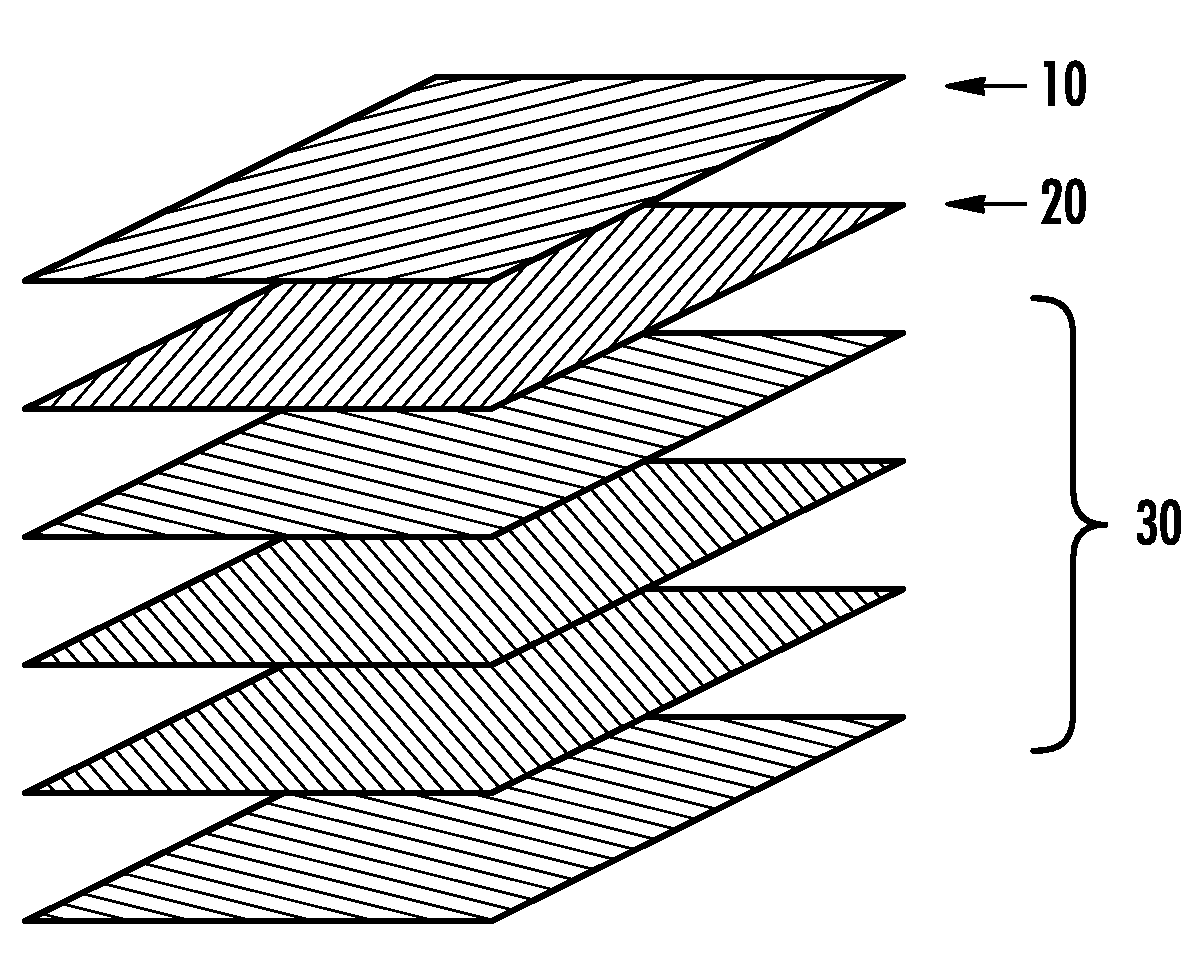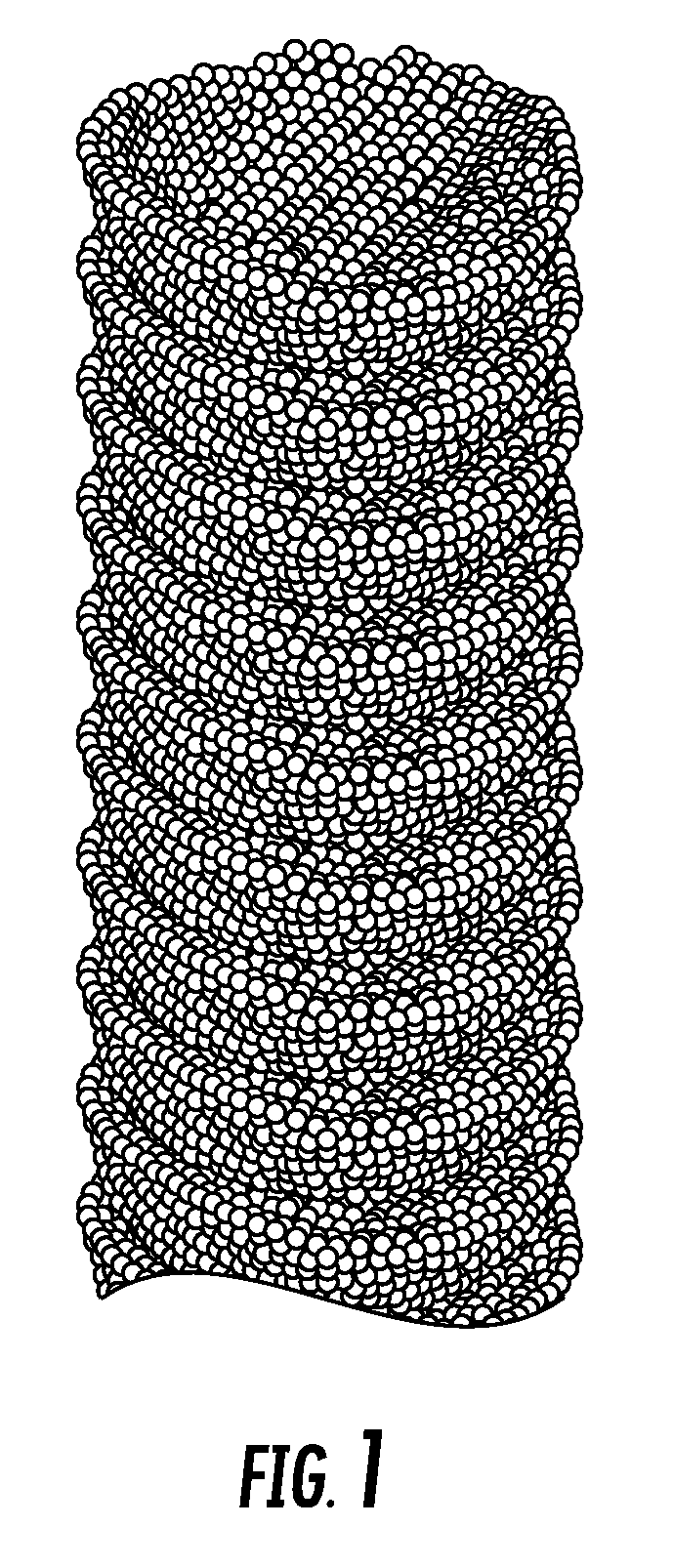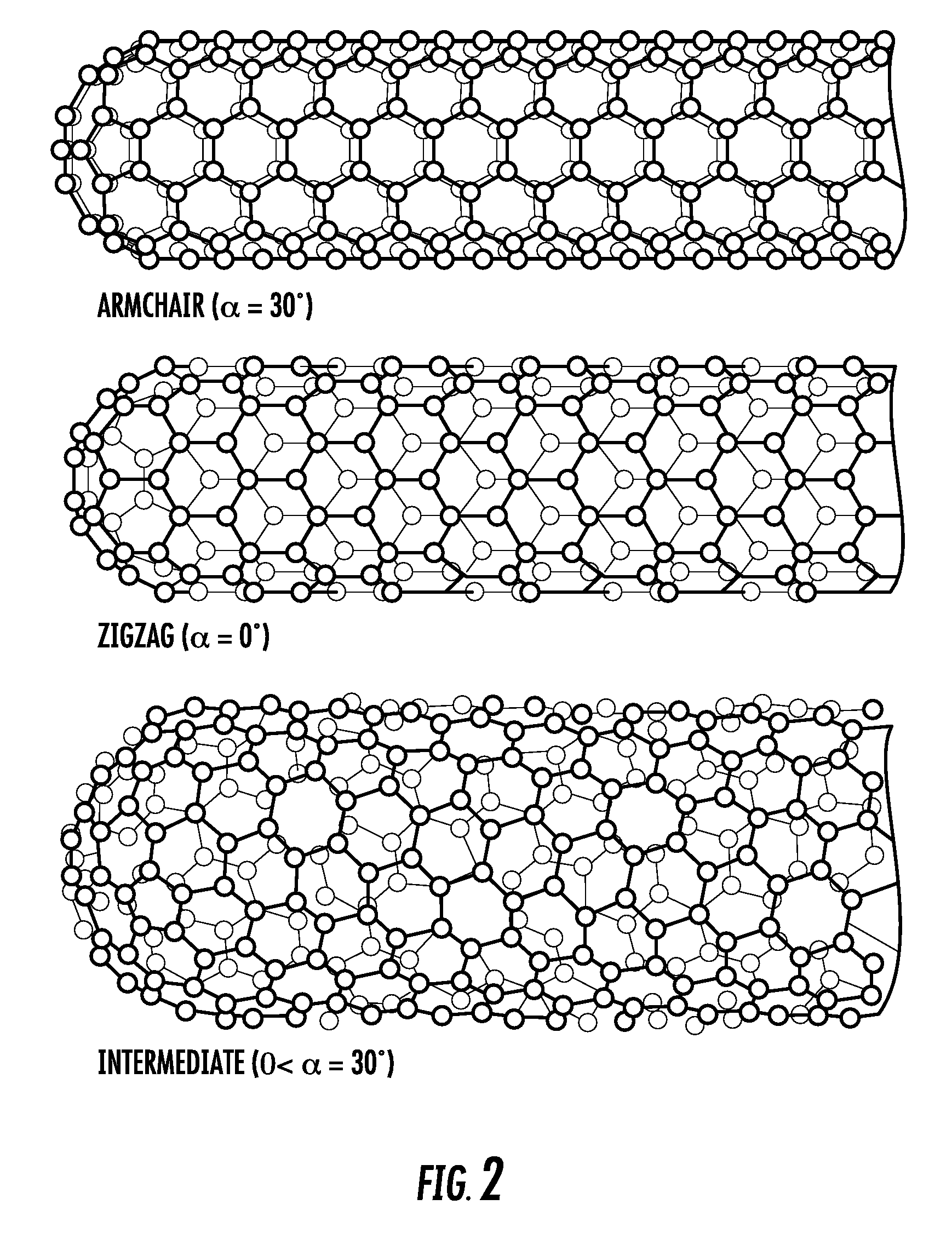Low density lightning strike protection for use in airplanes
- Summary
- Abstract
- Description
- Claims
- Application Information
AI Technical Summary
Benefits of technology
Problems solved by technology
Method used
Image
Examples
example 1
[0166]Initial calculations predict that 5 to 15% by volume spiky copper balls and carbon nanofibers or metal coated nanofibers or mixtures thereof combined with a low density (e.g. 0.015 lb / ft2) copper screen with a surface film at 0.02 to 0.025 lb / ft2 would meet the lightning strike protection criteria. This would result in an areal density less than 0.055 lb / ft2 (254 gsm), which results in over 10% weight savings compared to prior art lightning strike protection material.
example 2
[0167]The CTE of a single wall carbon nanotube (SWCNT) shown in FIG. 2 is estimated to be estimated to be as low as −0.83×10−6 / ° F. (−1.5×10−6 / ° C.) perpendicular to the tube axis and −6.7×10−6 / ° F. (−12×10−6 / ° C.) parallel to the tube axis. As little as 1% by volume of SWCNT is required to decrease the CTE of the surface film close to the CTE of copper. A flattened expanded copper or aluminum screen can be used with the nanoreinforced surface film. The flattened screen will allow for a lighter, thinner film (0.020 lb / ft2 instead of the conventional 0.030 lb / ft2), reducing the weight of the total system. This would also result in over 10% system weight savings compared to prior art lightning strike protection material.
example 3
[0168]Single- or multi-wall carbon nanotubes or mixtures thereof can be added at 15 to 55% by weight to a polymer film to meet Zone 1A lightning strike protection. If aligned 10,10 armchair configuration single wall carbon nanotubes are used the lower range is required and would result in up to 50% weight savings compared to prior art lightning strike protection material. Higher concentrations are required for other chiral carbon nanotube configurations. The nanotubes could be incorporated into a layer of a two-phase polymer or as a paper or felt to ensure the gap criteria is met (e.g., 50% by weight CNT in PVDF with CNT / PVDF layer at 30% to 50% by weight within epoxy). Total film areal density to be between 0.020 to 0.040 lb / ft2.
PUM
| Property | Measurement | Unit |
|---|---|---|
| Percent by mass | aaaaa | aaaaa |
| Percent by mass | aaaaa | aaaaa |
| Percent by mass | aaaaa | aaaaa |
Abstract
Description
Claims
Application Information
 Login to View More
Login to View More - R&D
- Intellectual Property
- Life Sciences
- Materials
- Tech Scout
- Unparalleled Data Quality
- Higher Quality Content
- 60% Fewer Hallucinations
Browse by: Latest US Patents, China's latest patents, Technical Efficacy Thesaurus, Application Domain, Technology Topic, Popular Technical Reports.
© 2025 PatSnap. All rights reserved.Legal|Privacy policy|Modern Slavery Act Transparency Statement|Sitemap|About US| Contact US: help@patsnap.com



